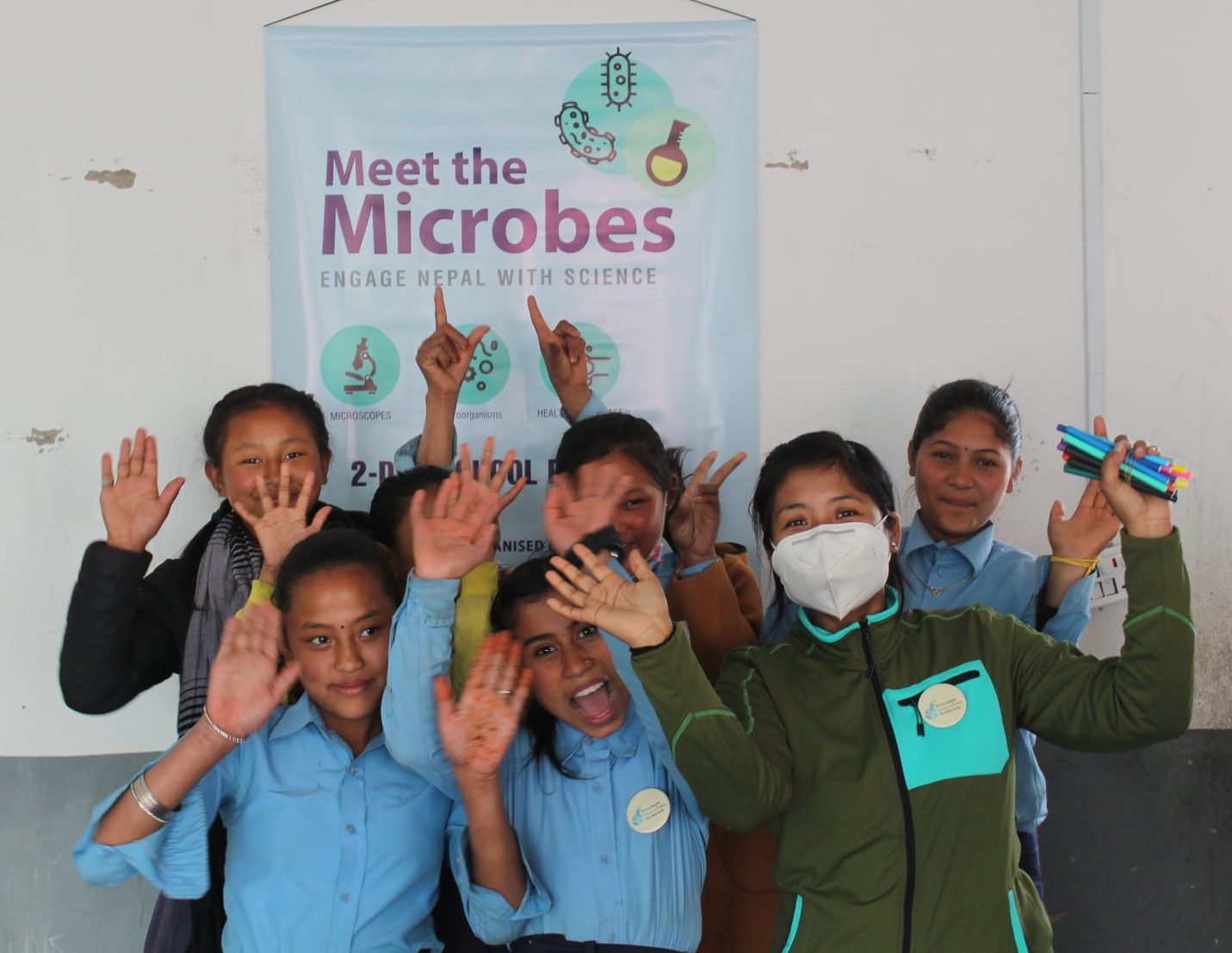The power of hands-on experience – Blog Post
– Sindhuli program –
The best way to learn science is by doing hands-on practices. Doing this, brings immense knowledge, grows interest and eventually boosts the students’ creativity. I believe there are lots of subjects that need visual and practical experiments to be better understood. I have been involved as a volunteer with Engage Nepal with science for a while now, an organization that runs as a collaboration of the Research Institute for Bioscience and Biotechnology (RIBB) and the Welcome Centre for Cell Biology (WCB), and I feel pleased to be part of this project. This time the workshop I participated in was called ‘Meet the Microbes’ funded by the Society for Applied Microbiology (SfAM).
Day 1
On January 26, 2021, a team of six people gathered at RIBB around 8 in the morning for the school learning program at Sindhuli. We also had with us our guest from Spain, Sonia Suarez, who is a sociologist and had come to Nepal to undertake different school learning programs. 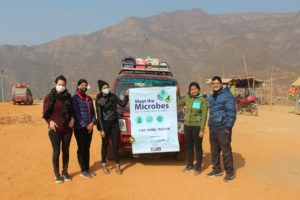 Finally, after a 7 hours long drive, we reached our destination: Sindhuli, Dhungrebass. We all were exhausted from the long drive. After freshening up, we rested for some time, took dinner and went to bed early to get ready for the following day. Sindhuli is located in the Central development region of Nepal, where there are few schools and colleges. Apart from a private school, I found that almost all of the community-based school education system of Nepal does not include any practical experiments related to the course books. And I also experienced the same things during my schooling. Pipal Bhanjyang Secondary school is one of the community-based schools of Sindhuli and I was excited to meet students and explore my knowledge with them.
Finally, after a 7 hours long drive, we reached our destination: Sindhuli, Dhungrebass. We all were exhausted from the long drive. After freshening up, we rested for some time, took dinner and went to bed early to get ready for the following day. Sindhuli is located in the Central development region of Nepal, where there are few schools and colleges. Apart from a private school, I found that almost all of the community-based school education system of Nepal does not include any practical experiments related to the course books. And I also experienced the same things during my schooling. Pipal Bhanjyang Secondary school is one of the community-based schools of Sindhuli and I was excited to meet students and explore my knowledge with them.
Day 2
The next day, we went to Pipal Bhanjyang Secondary School to deliver the learning program. Teachers welcomed us and all the students were looking at us with wide and surprised eyes. 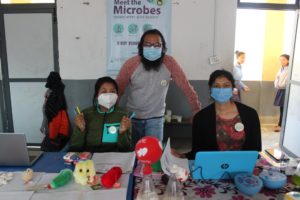 As I expected, Pipal Bhanjyang school, being a community-based school, had little equipment and most of the students were deprived of practical experiments. Approximately 37 students of class 7 and 8 gathered along with the principal and some teachers. We commenced our program by distributing masks and spraying sanitizer on the hands of all participants because of the Covid pandemic. Finally, Suvechhya, the event coordinator, talked about the program outline and the reason behind our visit to the school. When I was a child, I always wanted to learn things that were happening around me and always had questions related to them. So, I saw the same enthusiasm on the face of the students. I believe that kids are always keen to learn new things that they use in everyday lives. Students were looking very excited in the class.
As I expected, Pipal Bhanjyang school, being a community-based school, had little equipment and most of the students were deprived of practical experiments. Approximately 37 students of class 7 and 8 gathered along with the principal and some teachers. We commenced our program by distributing masks and spraying sanitizer on the hands of all participants because of the Covid pandemic. Finally, Suvechhya, the event coordinator, talked about the program outline and the reason behind our visit to the school. When I was a child, I always wanted to learn things that were happening around me and always had questions related to them. So, I saw the same enthusiasm on the face of the students. I believe that kids are always keen to learn new things that they use in everyday lives. Students were looking very excited in the class.  Prajwal, the RIBB president, started with the yogurt workshop, he explained its benefits due to the good bacteria in it and he taught students about the process of making yogurt focusing on the science behind yogurt making. Students were astonished when Prajwal explained to them about the good and bad bacteria that we face in our everyday life. The beneficial bacteria (Lactobacillus) were shown to children under the microscope and they were surprised that bacteria was used in yogurt. They finally understood that what they use in the village, to make yogurt, called “joran” in Nepali, consists of bacteria. All the students actively participated and asked us questions. Hands-on and visual experiments remain longer in our minds than theory and I believe that it’s the best way to teach kids in school. Afterward, Rojlina, a RIBB researcher, talked about soap and the chemistry behind it. The bread-making process was also demonstrated and how fermentation leads to gas formation. And then the soap was prepared by the students themselves and the products were left to set out for the following day.
Prajwal, the RIBB president, started with the yogurt workshop, he explained its benefits due to the good bacteria in it and he taught students about the process of making yogurt focusing on the science behind yogurt making. Students were astonished when Prajwal explained to them about the good and bad bacteria that we face in our everyday life. The beneficial bacteria (Lactobacillus) were shown to children under the microscope and they were surprised that bacteria was used in yogurt. They finally understood that what they use in the village, to make yogurt, called “joran” in Nepali, consists of bacteria. All the students actively participated and asked us questions. Hands-on and visual experiments remain longer in our minds than theory and I believe that it’s the best way to teach kids in school. Afterward, Rojlina, a RIBB researcher, talked about soap and the chemistry behind it. The bread-making process was also demonstrated and how fermentation leads to gas formation. And then the soap was prepared by the students themselves and the products were left to set out for the following day. 
Day 3
Around 11 am we reached the school premises and started our 2nd day program by tasting yesterday’s yoghurt and soap. Our yoghurt was so delicious that students were rushing to taste it and also to see the soaps. Manish and I distributed yoghurt to students and teachers in cups. Teachers and students gave us good feedback and they loved it. Some of the students said that this yoghurt was sweeter than homemade yoghurt. They were also eager to see beneficial bacteria on the microscope that is found in yoghurt. The soap that was made yesterday was also totally ready to use. Rojlina and Sonia took all the students to the tap area and they demonstrated how to wash hands and kill pathogenic bacteria to students and also talked about the chemistry behind killing of bacteria by soap. Washing hands keeps us away from diseases causing bacteria. All the students were equally participating and they looked so excited! We had a quiz competition for students and our team encouraged students by giving extra soap to the best students as a gift. Beside this, we had a portable microscope along with other scientific equipment such as animal and plant cell models, different body cell models and growing microalgae. Students were curious to watch bacteria and other microbes found in yoghurt and pond water under the microscope. They said that this is the first time they saw a microscope and bacteria in real life.  They prepared bacteria slides in a very jolly mood and viewed under microscope by themself and made different pictures of the cell. I was ecstatic to see them happy and enthusiastic. And, I asked them: do you like science subject or not?” They laughed and said it is a very difficult and tough subject for us. I agree that science is a hard subject and the reason behind this is due to the lack of equipment and proper hands-on experiments at school. But when we do it visually it brings more interest and enables us to think creatively and makes it easy to understand. Suvechhya and Rojlina showed different animal and plant cell models as well as different parts of body cells and then the students made similar models using plasticine. Furthermore, students saw microalgae on the portable microscope and learnt about its benefits to people, especially women as they can be used as a source of iron. I think, to understand science better we need to bring real world problems into the classroom. So, to understand covid-19 problem, we did tonic water experiments with students and explained how diseases spread from one person to another. Our activity session ran for two hours and at last, the coordinator of the project handed over a portable microscope along with plant and animal cell models to Pipal Bhanjyang School so that they could continue the science experiments at their school.
They prepared bacteria slides in a very jolly mood and viewed under microscope by themself and made different pictures of the cell. I was ecstatic to see them happy and enthusiastic. And, I asked them: do you like science subject or not?” They laughed and said it is a very difficult and tough subject for us. I agree that science is a hard subject and the reason behind this is due to the lack of equipment and proper hands-on experiments at school. But when we do it visually it brings more interest and enables us to think creatively and makes it easy to understand. Suvechhya and Rojlina showed different animal and plant cell models as well as different parts of body cells and then the students made similar models using plasticine. Furthermore, students saw microalgae on the portable microscope and learnt about its benefits to people, especially women as they can be used as a source of iron. I think, to understand science better we need to bring real world problems into the classroom. So, to understand covid-19 problem, we did tonic water experiments with students and explained how diseases spread from one person to another. Our activity session ran for two hours and at last, the coordinator of the project handed over a portable microscope along with plant and animal cell models to Pipal Bhanjyang School so that they could continue the science experiments at their school.
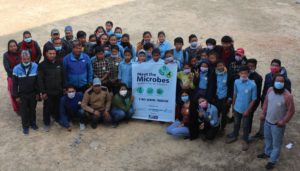
Thanks to Engage Nepal with Science for giving me such a wonderful opportunity to interact with students and dissipate my knowledge to school kids.
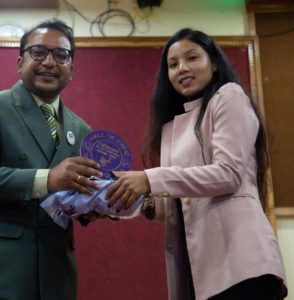
Post by Rita Majhi (RIBB researcher)

